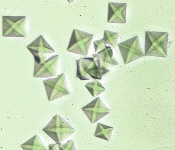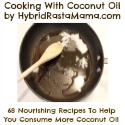What are oxalates?
Many have asked for help understanding oxalates so I decided to give a very brief description of what they are and how to know if you should look into this further. This is far from exhaustive and I am far from an expert but since this has had such a profound impact on the healing of one of my children I wanted to share.
I’ll start with how I got here. I was diagnosed nearly 10 years ago with vulvodynia. I also have had a kidney stone, twice. I did not realize at the time that these two things were merely symptoms of the same problem. After my first kidney stone I read that eating high oxalate foods can cause them and that spinach (which I had recently begun to eat in great quantities) was one, so I stopped eating spinach and left it at that. Fast forward several years I was a mother of 2 and Little J seemed to be reacting to lots of high oxalate foods that I ate. At first I was too overwhelmed by GAPS and everyone’s dietary needs to do more than limit those high oxalate foods I could easily remember. I was far from strict except for the ones that caused obvious symptoms, almonds and chocolate. I just figured GAPS would heal us and I wouldn’t have to get more specific than that. Then this past spring (after nearly 18 months of GAPS) little J began to tell me that it hurt when she peed. She had already turned 3 and I had been wondering when she would ever master potty learning. When I learned that it hurt to pee (a classic sign of oxalate issues) and I realized that her poopy diapers often looked like they were full of beach sand (another classic sign) I decided to really understand oxalates and commit to a low oxalate diet (LOD) for her sake and my own. Thankfully, due to her sensitivities, we didn’t have many high oxalate foods to still eliminate. Within a month or so she was ready to work on potty learning and at this point she only wets the bed when she is dumping oxalates (more about that later).
Here is a list of conditions and symptoms that can be helped by or cured by a LOD:
- Kidney stones
- Urinary pain
- Autism Spectrum Disorders (ASD)
- COPD/Asthma
- Vulvodynia/genital pain
- Thyroid disease
- Cystic Fibrosis
- Fibromyalgia
- Join Pain
- Chronic Fatigue
- Insomnia
- Hormonal Imbalances
- Chronic Candida
Oxalates are a common food chemical. They are indigestible to humans and for the most part should stay in the GI track and pass through unabsorbed. A healthy gut will resist absorbing them and will contain bacteria that break down oxalates to further protect the body. No benefit has been found to oxalates in the body. In fact they disrupt normal body functions on the cellular level. Once absorbed, the body needs to protect itself from them, either by putting them somewhere in storage or by excreting them. There is a limit to how much the body can excrete at once so if too much oxalate is absorbed at least some will be stored. If your detoxification systems aren’t working well, you might not excrete any.
So why do some people have problems with oxalates while others don’t? Part of the answer is in their gut. Remember I said that a healthy gut will both break down the oxalates and be a barrier to them being absorbed? Well some of us have what is called a leaky gut and these various particles pass through the gut wall and into the body where the body then has to deal with them. Many are also missing the bacteria, oxalobacter formigenes, that loves to break down oxalate. This bacteria can be killed by many different antibiotics. In fact many people’s symptoms of an oxalate overload can be traced back to a round of antibiotics. Oxalobacter formigenes is anaerobic so it isn’t found in fermented foods and isn’t present in any probiotics currently on the market. Remember though that bacterial break down is not the bodies first line of defense against oxalate. A healthy, non-leaky gut is.
Ok so I get it, if I have one of these conditions I just stop eating foods with oxalate in them and wait to see if I feel better. If I do then I’ve got an oxalate problem and if I don’t then I don’t. Just like a food allergy elimination test. Right? Oh and if eating foods that are high in oxalate make me feel good then clearly I don’t have an oxalate problem, right?
Wrong.
Sadly oxalate isn’t that simple. It isn’t like most food chemical issues or allergies where avoiding or limiting that food or chemical prevents symptoms. Oxalates get stored by the body similar to the way heavy metals are stored. While they are coming in rapidly the body is in storage mode, until the storage gets full. There is a limit to how much you can store before your body is overwhelmed and some of it starts “spilling over”. Some people have no symptoms of oxalate overload, not because they aren’t absorbing excess oxalate, but just because they just haven’t hit their personal tipping point yet. They may be storing lots of oxalate in their bodies but in such a way that it isn’t causing obvious symptoms. In fact they may feel worse on a lower oxalate diet and conclude that their body needs the high oxalate foods to be healthy. The problem is that sooner or later their oxalate storage will be full and the problems will be unavoidable. The solution is a LOD but…
Slowly, over time, (think months not days), step down your oxalate intake. Pick just one or two high oxalate foods in your diet to swap out for low ones at first. For example choose arugula instead of spinach. Pumpkin seeds instead of almonds. At the start some people will have a “honeymoon” period when they feel better than they did before. This usually only lasts a few days, if you have it at all. Next you will start something called dumping. This means that your body is seeing an opportunity to get rid of it’s stored oxalate. It starts moving it out of storage and to the excretion areas. If you reduce intake too quickly you could cause the body to dump too much at once and cause a kidney stone or other severe problem. Some have been hospitalized from the symptoms of too big a dump. Don’t be one of them. Once out of storage the oxalate needs to travel in your blood stream to be eliminated. It can and probably will cause pain, brain fog and other problems along the way. Then when it is being eliminated it may cause uncomfortable symptoms in your elimination systems. “Sandy” poops and cloudy urine are classic signs of an oxalate dump but are not necessary to prove an oxalate problem. Usually symptoms get worse, sometimes much worse, before they get better.
Symptoms of Oxalate dumping include (not an exhaustive list)
- Joint pain
- Painful urination
- Excessive urination/bed wetting
- Burning with bowel movements
- Sandy Poop
- White or black flecks in bowel movement
- Skin rashes
- Brain fog
- Eye pain
- Insomnia
- Anxiety/depression
One way to slow down or stop dumping if you go too fast is to eat something high in oxalate. This will switch your body back into storage mode and stop the dump for the time being. This will also confirm for you (if you still had doubts about the oxalate connection to your symptoms) that it is indeed the cause. How long will eliminating excessive oxalate take? I am hopeful that after 1 year on the LOD we will have most of our stored oxalate dumped but it may take much longer. Depending on how fast you can dump and how much you have stored it could be several years to get through it all. Then, once that stored oxalate is dumped, you still need avoid absorbing too much oxalate because that will get you right back where you were before.
So where is all this oxalate coming from? It is found in a wide variety of foods, many are thought of as powerhouses of nutrition. Sweet potato, spinach, almonds, some berries, most grains all have high levels of oxalate and must be strictly avoided by people on a low oxalate diet. Some other foods can be enjoyed in very moderate serving sizes, broccoli, macadamia nuts and bananas. While still others have low oxalate per serving and can be enjoyed in nearly unlimited quantities, lettuce, cauliflower, most meats, dairy. It can be complicated to figure out what to eat. There aren’t any easy rules you can apply. Some citrus fruit is high while others are low. Different varieties of green beans have very different oxalate values. It also matters how a food is prepared. Some oxalate is water soluble so soaking and cooking in water and discarding the cooking water lowers oxalates enough on some foods to make them part of a LOD (all the soaking and boiling in the world won’t put almonds or spinach back on the menu though, sorry). For the same reason juicing will likely concentrate the oxalates in a given vegetable and so only low oxalate veggies and fruit should be juiced. For an adult on the LOD, daily oxalate intake shouldn’t exceed 40-60mg of oxalate. Raw spinach has 1145 mg per 1/2 cup. Even one leaf would be too much.
The Yahoo group I have linked below will have the most up to date testing information on Oxalate values in their files.
This is all very confusing and overwhelming. Is there a test I can take to know if this is really an issue for me? Yes there is it is called the OAT (Organic Acids Test) and Great Plains offers it. You will need to get a Doctor to order it for you and it is best to do the test while you are experiencing a flare of symptoms. If your Dr is unwilling to order it you can go through Great Plains My Med Lab to order it for yourself.
Will my Dr know about this? Not likely. Urologists know about oxalate because of kidney stones and many think that is the only worry. The list owner on the yahoo group I have linked below is a researcher who is doing unfunded research into oxalates. She helps to interpret the OAT’s for people who need her expertise and shares much the information that she finds while doing her research. It is a real blessing to have someone so dedicated to understanding this subject and to helping others available online.
Here are a couple of links for more information. Take your time understanding this. There is a lot of information between foods lists and supplements it can be hard to keep it all straight. I am far from an expert myself.
Edited to add:
Some people create oxalates in their own body because of oxidative stress. These people need more than the LOD in order to rid their body of excessive oxalate. The OAT test I referenced above will show if that is the situation for an individual. They need to be on a LOD but will need some specific (to them) supplements to see real improvement. Also some things, like vitamin C, turn into oxalate in the body, despite not containing any oxalate themselves. Someone on a LOD needs to keep their non-food intake of vitamin C very low.




59 Comments
Trackbacks/Pingbacks
- Cooking Basics: How to Roast a Chicken | Loving Our Guts - [...] the organs. After this you can then rub in the tbsp of dried herb(s). Thyme, and sage are good …
- Blog Talk Radio Show with Patty Lacoss-Arnold from Loving Our Guts | GAPS Diet Journey - [...] What are Oxalates? [...]
- Finding Common Ground- The Paleo Auto-Immune Protocol and the Low Oxalate Diet | Cooking Traditional Foods - [...] familiar with oxalates and you don’t know what they do, I recommend you check out What are Oxalates? by …
- oxalates | Pearltrees - [...] What are Oxalates | Loving Our Guts [...]
- Oxalates and Juicing Hybrid Rasta Mama - […] more information on oxalates? Patty over at Loving Our Guts wrote a great piece on What Are Oxalates. It …
- Finding Your Perfect-Diet Part 4 - […] website is very helpful for finding recipes and ideas for how to eat low oxalate. Here is an excellent …


















Patty, thank you for this explanation. I have wondered what is the point of dumping and why it keeps going on for such a long time. This post was a good succinct description of what oxalates are, the problems and how to fix it.
Thanks again for some great info/reminders! I have been trying to follow a LOD GAPS diet since last summer. However, I just noticed today that liver is a medium/high oxalate food and I have been eating that every day! Because I am low in B vitamins and have heard such amazing things about liver, I jumped into taking about 2 T. liver a day. I prefer taking real foods over supplements. Now I am wondering if I have inhibited healing because of it. Like you mentioned in your post, it's so hard to keep everything straight. Maybe I should only do liver once a week now? Also, I have never been able to handle any types of ferments and wonder if that is an oxalate issue? Sauerkraut causes yeast-like symptoms (I know I have fungal issues) and I haven't tolerated any dairy in years so I am hesitant to try milk kefir, yogurt, etc. I even reacted strongly to fermented cod liver oil. Are oxalates related to ferments at all?
Look up something called Histamine Intolerance.
Briana,
I'm looking it up and seeing liver as low on the spreadsheet but without a value for it. Just when I think I know something… I wouldn't worry about 2T of liver anyhow. I thought it was medium but low or medium that isn't a big serving of it and you have 40-60 mg of oxalate to have in a day. Ferments are something else entirely and not something I have ever had issues with. Have you been tested for SIBO? That can cause big problems with ferments.
Great - thanks! I ordered several - including most of the ones you mentioned. I am eager to start integrating them into my protocol.
Oops - just realized I posted my response to the "oils" post here instead of there. Oh, well. In response to the liver, I saw on two different lists that it was medium and medium-high. I guess it is good to know so I don't overdo it. As for SIBO, I have never been tested although suspect that I have it. Perhaps I should add it to the list of things to research/look into :-). I just worry that I won't heal without any ferments. I am only taking oral probiotics now.
VERY good blog post. I got into major trouble beginning early 2011 because of massively overeating high oxalates (cocoa covered almonds, iced tea, raw spinach salads) due to moving and poor access to my kitchen. Paid a huge price that I'm still recovering from! As a Thyroid Patient Activist, I'm going to refer others to your blog.
Janie Bowthorpe
http://www.stopthethyroidmadness.com
Great post Patty. I think it's important that GAPS people learn about oxalates.
@Janie- Thank You. I hope it can be helpful to many people.
@Natalia- I agree. Hopefully this can help some of the GAPS people who are stuck and trying to find healing.
Good Stuff! It's especially helpful to know about almonds. I had suspected me and almonds didn't agree, so I've cut way back on them and eat more seeds. I noticed that a lot of people bake with a lot of almond flour when on SCD and other gut healing protocols, I've always thought that was overkill. Good to know there is a reason my instinct told me to cut back on almonds. Thanks for sending me over here!
Thank you so much for this. My daughter (4yo) has struggled with bathroom accidents since we began GAPS in January. It has become worse lately, but she has shown some progress in just the last day or so. I’ll definitely be keeping an eye on the high oxalate foods to see how she responds. Thanks again! I really appreciate how you explain things.
Patty,
My dd and I are in GAPS intro (3-4 months in and currently stage 3-4) and I have discovered that I have an issue with oxalates. After spending some time on the Trying Low Oxalates website, I see that a wide array of supplements can be beneficial. I’m hesitant to supplement freely in intro- do you have any advice on how aggressively to attack the LOD while on intro? I’m torn between whether addressing the LOD with supplementation will lengthen or shorten the remaining time on intro. After reading one of your posts regarding leaky gut and the association with oxalate issues, I perused the oxalate food list and cut beets and spinach out of my diet, thinking I would return to study the issue in depth later. I was too overwhelmed by learning and performing the GAPS basics plus eradicating a parasite that I became aware of to get into it right then. About 5-6 weeks later, I had a fairly major oxalate dump. I’m also concerned about controlling the dumping symptoms as I’m looking for full time work and actively interviewing etc and could barely function during the couple days leading up to the oxalate dump.
Thanks for any thoughts….
Hi Sally,
We have used very few supplements here. We do take L-arganine when dumping and some extra magnesium. We don’t do the calcium with meals. We do try to stick with mostly low foods and some medium foods occasionally (tomatoes, peas, some spices). If we go very high my 4 year old has dumping symptoms.
Thanks Patty, nice to know some perspective. I’m probably still not eating low enough, but trying to step down gradually.
Good luck on your health journey!
Sally
Hi Patty,
How long did it take for you to see improved digestion with LOD? I began enzymes at roughly the same time as the LOD for Wes-so now it’s hard for me to tell which is helping (it would be nice to move away from the enzymes at some point!)
Also, is the OAT test a urine test?
As always, Thank you!!
Durae
Durae,
I’m not really sure. It is more that I looked back and realized at some point that her digestion was much improved but I’m not sure how long it took. Now she is also on enzymes and getting more improvements in her digestion so I think that for her both are important.
Yes the OAT test is a urine test. If you want to know about Oxalates you need to get the one that Great Plains lab does. Several labs do it but everyone does it a little bit differently.
This has been a very interesting article. I have known that spinach has oxalates and usually avoided raw spinach (I don’t eat it cooked either, however, I thought cooking helped eliminate the oxalates…guess not). Regarding kidney stones, they can be reduced or prevented by taking magnesium because it helps the body assimilate calcium instead of letting it concentrate into clumps in our body (that is why calcium supplements always need to have magnesium with them, so that the body will most efficiently assimilate the calcium and have it go where it needs to in the body and not form into stones anywhere in the body). I notice a mention of L-Arginine. L-Arginine feeds the herpes virus so it needs to be balanced out by also taking amino acid L-Lysine. Thank you to all who are putting this information regarding oxalates out there to help people avoid foods that were supposed to be good for them.
Hey Patty I started this stupidly going cold turkey for 4 weeks and am suffering massive skin problems, burning, itching and chronic unsightly rash, burning hands and feed and skin demonstrating urticaria type symptoms. I have re-introduced higher oxatate and taking probiotics now. I can’t do epsom salt baths. When you say folks get hospitalised, what happens? I’m on antihistamines now but cannot stand this burning, itching and weird rashes which are getting worse every day. Any ideas?
I’m so sorry you are so miserable! I am not a health care practitioner so I can only share what has helped us. Have you tried taking L-Arganine? That really helps my family with dumping symptoms but we don’t have skin rashes from oxalates. You should head on over to the yahoo group that I have linked in this post and ask there what people can suggest since many of them have dealt with what you are dealing with.
As for what sends people to the hospital, some have kidney stones, some end up with psychological issues, some simply are in terrible pain and don’t know what to do. Often people are sent back home and told that there is nothing wrong with them but clearly it was pretty bad if they felt the need to go to the ER.
Hi Beth,
How is your family now? Hopefully all better. I was reading your post and I’m not sure that my husband and I have Oxalate sensitivity but we have the same symptoms: itchy forearms and hands which gets worse at night when we’re trying to sleep. The areas where our skin meets fabric (ie: cheek, neck or arm under pillow) get itchy from the heat/warmth. But the itch feels like it’s internal, not on the surface of the skin.
My question is: Did you and your family experience these same symptoms? Any information is appreciated. Thanks.
Hi,
We have been doing LOD for our 3-year-old autistic son since around January (now it is November). We recently added K2 based on research we came across. It caused a burst in his language and also improved potty use but he also had some MAJOR tantrums, so we cut back the dose. Are you familiar with K2 for oxalate issues? It seems very helpful but I’m guessing caused a major oxalate dump.
We have used K2 in the past but not since we went strictly LOD. We tried the Vitamin K protocol for a while but once my dd was verbal enough to tell me how much pain she was in I abandoned it to go strictly LOD and saw major improvement in her pain pretty quickly. I may look into it again in conjunction with LOD.
I just wanted to share with you my mini miracle…
For the last 5 months I’ve had some really strange symptoms like dizziness, hypoglycemia, stomach pain, indigestion, nausea, anemia, rashes, tingling in the extremities, fatigue, cold all the time, insomnia, shortness of breath, panic attacks, extreme thirst with electrolyte imbalance, metallic taste in mouth etc.
At the start of all of this I was taking turmeric/cinnamon extract supplements a long with ALA, cod liver oil and D. As well, I was eating very healthy…lots of green smoothies, salads with spinach/kale, vegetables with every meal, no grains only white rice once in awhile.
Then I started getting all the symptoms as described above but in the extreme. Went to the hospital 4 times for the shortness of breath/chest pains. Of course, everything was fine.
Then yesterday, I decided to stop eating vegetables just to see what would happen so all I ate was meat/eggs and dairy.
For the first time in 5 months, I actually slept for more than 4 hours straight and was able to fall back asleep no problem.
Today, I had zero hypoglycemia, no dizziness and I feel so much better. After doing some research, I figured out what it was. It’s oxalates.
I matched up my food diary with my symptoms and realized that every time I ate high oxalate foods I would get the above symptoms. I always thought a low oxalate diet was only for those who got kidney stones. The thing is, all of the symptoms listed correlate with compromised kidney functioning. My blood results didn’t show abnormal kidney functioning because they would only show up if the kidney was at about 40% functional.
I know it has only been 1 day. It’s just that I feel so much better, it was so dramatic. I’m kinda ticked that it took me 5 months to figure this out.
Is an oxalate dumping inevitable? I feel so much better and now I’m afraid of the dumping.
Hi Vivian,
I’m so glad you have had such improvement! Yes dumping is inevitable. That is why you need to be sure to go back to eating oxalate and lower your intake more slowly. You are in the honeymoon period and that will likely only last a few days. Then your symptoms will come back, possibly more severe than they were when you were consuming lots of oxalate. Go join the Trying Low Oxalates Yahoo group that I have linked in this post and talk to them about your situation. The people on that list know a lot more than I do about oxalate and will be able to help you figure out how to proceed. Dumping stored oxalate takes time and you can’t really speed it up. Be prepared for at least a year but you will have breaks in there when you won’t have symptoms and the less you have stored the longer those breaks will be.
Good Luck!
Hi Patty, thanks for the wealth of information. Just wondering your thoughts on addressing the cause of Ozalate problems by repopulating with the missing flora required to assist in breaking it down. Do you know of any probiotic products containing the oxalobacter formigenes strain? Or do you think once the gut wall is rebuilt, it shouldn’t be a problem anymore?
Nicola
Oxalobacter Formigenes is an obligate anaerobe. It dies in the presence of oxygen. At this time there are no products that contain it and it is not know that any food contain it either. There is a company in Canada that is working on developing a supplement with that strain but so far they have not been successful. It is my hope that with a healed gut oxalates will not cause a major problem even if you are missing that strain of beneficial bacteria in your gut but I do not know if that is true. Perhaps the best that can be hoped for is tolerating a higher oxalate diet (say 100-150 mg of oxalate a day) when certain supplements are in place (like calcium with meals). Since oxalate issues generally are not an acute onset (they don’t happen right away when you eat too much) it would be difficult to judge if you were tolerating the level of oxalate that you were consuming until it was too late and you would have to dump it all, all over again. One family on the list that I am on planted the wrong variety of green beans and ate a bunch of them one summer with no obvious reactions but by the end of the summer they realized that they had built up their oxalate stores once again and had to go through the difficult process of dumping them for the next several months.
Thats interesting, I recall reading something similar. Thanks for your response. Nicola
I thought had read that that bacteria is in cabbage. that probably means just raw. Forgot the source. Have been reading up on low oxalate in last 2 weeks of tryng to slowly reduce mine (and being addicted to almond butter)
There is one person who claims that it is found in cabbage but she has been unable to provide documentation to back that up. Susan Owens, a medical researcher who has devoted her life to researching oxalates, has not found anything that backs this claim up.
Patty- This is probably the best explanation of oxalates that I’ve found. My son has been on the LOD for three years and we are slowly able to increase his tolerance level. Thanks for writing this…it has probably helped a lot of people understand oxalates better. Feel free to check us out at http://drewsautismdiary.blogspot.com although our recipes aren’t nearly as pretty as yours.
Joanna
Just FYI, the lowoxalate.info link above doesn’t seem to be working. Should it say lowoxalateinfo.com instead?
Thank you! I did mean lowoxalate.info but somehow the link was broken. It is fixed now.
Hello Patty
I am also doing GAPS and going to try low oxalates to try to heal vestibulodynia. I’s be interested to know what pro-biotic supplement/s you take? Apparently VSL#3 is the best for reducing oxalate in the gut. I have already started the Biokult recommended for GAPS, and wondering whether to add in VSL#3, and if so at what dose? Will they affect one another. I’d be so grateful for your opinion, as I do ask a few questions on blogs like these and don’t often get a reply.
Hi Sarah,
The most recent probiotic I have used is prescript assist in addition to the properly fermented foods. I think there is nothing wrong with using VSL#3 either instead of or in addition to Biokult. They both have their advantages. I personally would probably switch them up rather than take them at the same time simply because they are both so expensive. I don’t know if that is the right answer though, it is just what I would do.
Hi Patty, Thanks a lot for your explanation.
Do you know any ways to develop a gut strong enough to resist the oxalate absorption?
Also, at one point in your text you say that recently you’re consuming great quantity of spinach…it means you finally resolved entirely the oxalate problem?
Thanks!
Hi Cris,
Everyone absorbs some oxalate so entirely avoiding absorbing it impossible. Healing a leaky gut will help. Also improving your gut flora so that it breaks down oxalate helps. In addition some minerals like calcium and magnesium an bind with oxalate and make it difficult for your body to absorb it.
I’m not sure where you think I said I am eating spinach. I am not and haven’t eaten it for many years. I eat arugula instead of spinach. I continue to be hopeful that I won’t have to worry about oxalate forever but for now I have not found a way to heal the need for a low oxalate diet. I haven’t given up trying though.
Hi Patty. I just came across your website/blog. I am on my own journey to healing my leaky gut. I could not believe my eyes when I was reading your post on oxalates that you have vulvodynia! I have been living with that for 20 years now. I wanted to know if you’ve seen improvement in this condition while on the LOD. If so, do you think that GAPS has also helped? I find it very fascinating that you made a connection between vulvodynia and leaky gut.
Absolutely. All of my vulvodynia symptoms are gone thanks to the low oxalate diet. While I am dumping oxalates (rare now) they sometimes come back temporarily but for all intents and purposes I am cured. GAPS heals the damage to the gut. I am hopeful that some day, once my gut is healed, I will be able to eat more oxalates but for now I need to stay low.
I am so glad that you saw complete remission of your V symptoms! I tried a LOD years ago whilst also taking calcium citrate supplements but never saw improvement so gave up on it. I have also been suffering with digestive issues practically my whole life. I was first diagnosed with acid reflux when I was 17 then IBS, and then I had my gallbladder removed when I was 20. I struggle with chronic constipation, stomach aches, and other digestive woes. I have been following a Paleo diet for some time now but that alone has not relieved my symptoms. I found a “paleo” dietitian who just published a book called Digestive Health with Real Food. Her premised is based on GAPS/SCD but she takes it even further. The intro diet is a strict 4-6 week elimination diet on which I can only eat meat and carrots, spinach, green beans, and zucchini. I can’t have any spices, only salt, pepper, and herbs. Basically she has you eliminate as many potential gut irritants as possible and once you feel better you can reintroduce foods/spices one at a time and see how you feel. I am in week 2 of the elimination and have yet to see any relief. In fact, my constipation is pretty severe. I am under the care of a functional medical practitioner(he is a MD) and he feels that my being on a PPI(for reflux) for years and years has played a part in my gut damage and the reason why I don’t have normal bowel habits. I tried to wean off of them but I couldn’t handle the extreme rebound reflux so I went back. Right now I am concentrating on the diet and if and when I feel better I will try to wean off the meds again. I’m still skeptical that I’ll be ok since years ago my acid levels were tested and were off the charts. But I digress. Thank you for replying so quickly! I look forward to reading your blog posts.
Well on that diet you won’t improve. Carrots, green beans esp spinach are extremely high oxalate! Zucchini and meat are low. So is salt but black pepper is high. Some herbs are also quite high. It takes at least a year to dump stored oxalate and you will usually feel worse before you feel better. If you want to stay on a similar diet replace the spinach with arugula for a week. Then replace the green beans with cauliflower or something else, and after another week replace the carrots with winter squash. Also replace your black pepper with white pepper. You will have to go to the yahoo group and look up your herbs. No wonder you aren’t feeling any better!
Patty
Actually, my vulvodynia isn’t so bad right now, it’s my stomach that’s a mess! I actually saw improvement in my V symptoms after I had my first child almost 9 years ago. I’m still not great but much better than I was. I actually just recently started pelvic PT. So far I don’t think I’m seeing any improvement but it’s only been a few weeks. I think once I am done with this intro diet and I can incorporate more foods, I will replace the higher oxalate ones with lower ones. I honestly don’t feel that eating these veggies have made me feel any worse. The worst time for is right before my period. I flare badly and then after it’s over I go back to baseline. I have always believe there’s a hormonal component to this but there’s no way of knowing for sure. Back in the early days I tried birth control pills but it only made my symptoms worse.
Yes eating high oxalate foods rarely makes people feel immediately worse (and removing them rarely makes people feel immediately better. Since you have built up your oxalate over years it will take some time for your body levels to come down enough for your symptoms to subside. Having a problem with oxalates is a lot more like having a problem with lead than a food allergy. Oxalate it toxic to absolutely everyone and enough of it will kill anyone. It has no beneficial function in the body. There are two areas that people get caught. If they have a leaky gut that lets it into their body at a higher rate than most and if they have damaged metabolism that makes it harder for their body to eliminate the oxalate that it absorbs. You already know you have a leaky gut so that explains how the oxalate got in there. It is going to take a while to get it out and to facilitate that you need to reduce your intake. If you feel better for a few days after taking spinach out of your diet or if you start feeling worse those are both signs that you will benefit from the low oxalate diet. If nothing happens you may need to do an OAT test from Great Plains to find out where your metabolism is broken since you aren’t detoxing the oxalate. Hormones play a role too and oxalates interact with them.
If you are going to be adding foods back into your diet please go to the Yahoo group and read the food list so that you only add back low oxalate foods. For most people it takes a few months to start feeling better on the Low Oxalate diet and at least a year for the worst of the dumping to be overwith. If you have vulvidynia you have an oxalate problem. There is no question. The question is how to get that fixed. Everyone needs to be on a low oxalate diet to fix it but some also need to take supplements (more than just calcium citrate). The diet you followed years ago may not have been accurate (some lists say that green beans are low for example). You really need to get your daily oxalate intake down to 40-60mg a day. One leaf of spinach is more oxalate than that. Lots of “healthy foods” are also high oxalate and may be sabotaging your efforts to get your health back. I also wonder if you simply didn’t do the low oxalate diet long enough. I gave up spinach after my first kidney stone but didn’t really go low oxalate till a couple of years ago and I had a lot of oxalate to dump. It took me 18 months to finally give up having 1 square of dark chocolate a few times a week and when I did that I dumped a bunch more oxalate for at least 3 months. That was the only high oxalate food in my diet. I was shocked.
I hate for you to see this information and walk away thinking it won’t help you when you didn’t have good information to start with and you didn’t give the diet enough time to see what it could do for you. Expect to feel worse, at first, on a LOD. The good comes later. Once you get the oxalate out.
Patty, Yes and remind to definitely go Slowly reducing oxalate foods. SOme also have from digestive tract, from not digesting fats well, from nutrient deficiencies…
I eat Roma italian beans, and pour off the cooking water ,they are lower then regular beans and some is removed into the cooking water.(same with carrots). Yes some herbs quite high per teaspoon.
Lynn D recently posted…YARN DYED RED
My plan once I am done with the elimination part of my diet is to only add in low oxalate foods back in. I have joined the yahoo group and saved the oxlate lists so I have a reference for when I go food shopping.
Great! Sounds like you have a great plan in place.
I just wish the oxalate lists weren’t so confusing! There still seems to be a bit of a discrepancy between the different tests. One list had cucumbers listed as very high, but the values were low and the other list says they are low. I am thinking that was just a mistake. The per serving content was 3.8. I can’t see how that can be interpreted as very high or even moderate on any list!
As I convinced myself in, the parasites could be one of the top producers of oxylates, histamine and chemicals within the body. Getting rid of the parasites is getting oxylates symptoms relief also. I think everyone sould undertake a treatment neglecting lab results. The only lab result that may be reliable is Metametrix Complete GI which is testing the poo for other DNA. But it often bring result like “parasite present, taxonomy unavailable”
Interesting. We have treated extensively for parasites here and are pretty convinced that they are gone and yet oxalate issues persist.
Have you heard of taking an over the counter drug called “Guaifenesin” for removing oxalates from our bodies?
Yes and I did that years ago but I don’t remember the result. It was not as effective as the diet.
Damn I just spent a half hour typing in the comment to have the whole thing dissapear. I
Oh forget it just add me to your list
Hi Patty, would you mind sharing what practitioner you are going through who knows how to interpret these tests for you? Such as the OAT and the other tests that you do. Thanks!
Unfortunately the only person that I know of who can interpret OAT tests has been unable to do so for over a year because of personal reasons.
What if you buy organic high oxilate foods, is that OK?
Organic makes no difference in oxalate values.
Do you have an update on the oxalobacter as a probiotic type supplement?
I also hear there is a Swedish company producing something for people with primary oxaluria. Is there any chance they might offer those with vulvodynia something?
Lastly, what about fecal transplants to get oxalobacter form. ? I’ve heard it has to be anaerobic. Isn’t there somewhere we can get this done to alleviate our suffering.
Why can’t this be recognized and more be done for those of us suffering. The low oxalate diet is not a heart healthy diet and I have high heart risks.
I don’t agree about a low oxalate diet being unhealthy but I do wish I could expand my diet. That probiotic is not approved yet and when it is you will almost certainly need a Dr willing to prescribe it. The problem with fecal transplants is that the way that they are typically “processed” introduces oxygen to the stool and that will kill the O.F.
Thanks Patty! This is a great Post and the comments section is one of the best such I’ve read. I took a half page of notes to follow up on just from the Q&A.
FYI I recently downloaded the TLO Yahoo Group Food list dated July 2015 and it has over 1900 entries! I have been amazed at the thoroughness of the list. Most everything I have looked for has been there. One tip: use the Excel search function to find things rather than scrolling endlessly. It can be a bit hard to find so below is the path to use once you have joined the group. ROB
https://groups.yahoo.com/neo/groups/Trying_Low_Oxalates/files/CURRENT%20Food%20List/